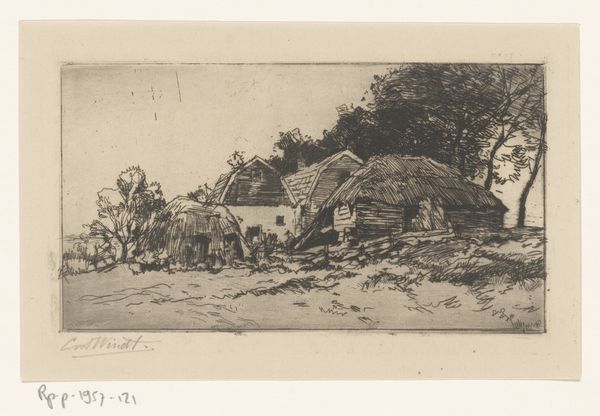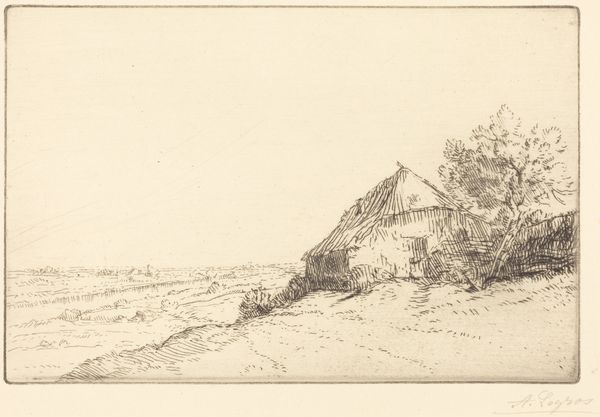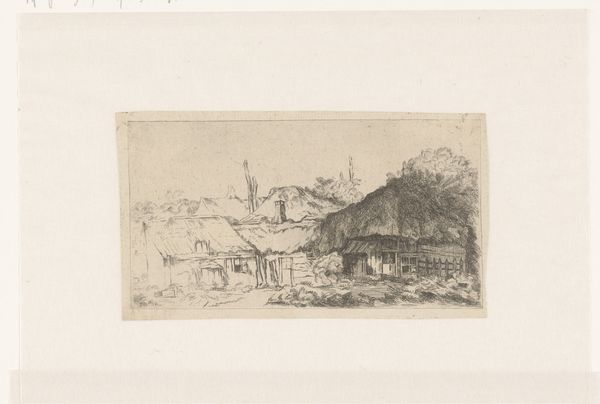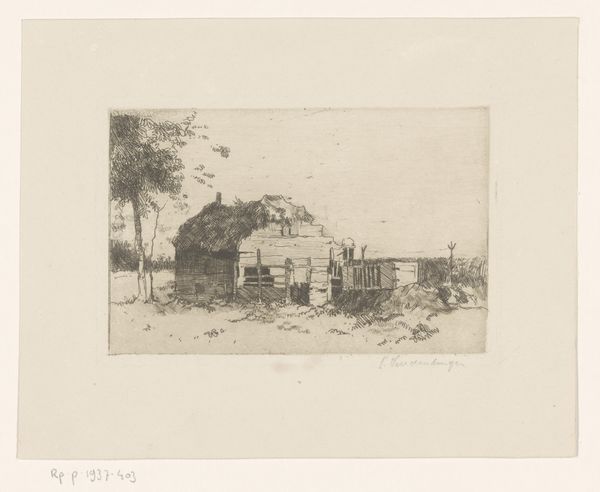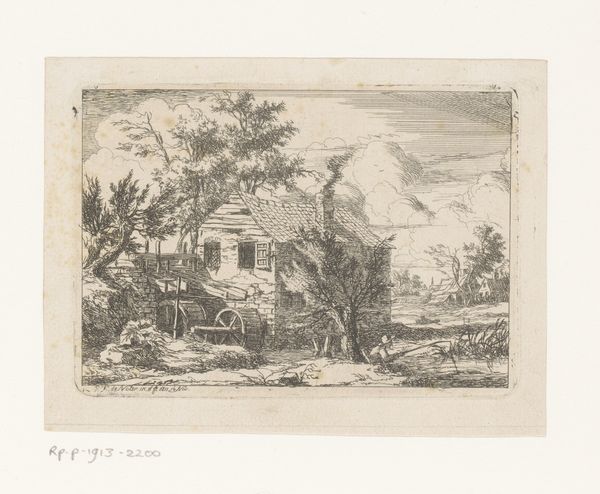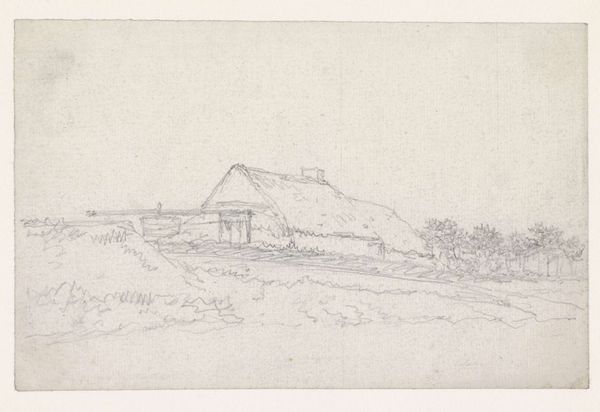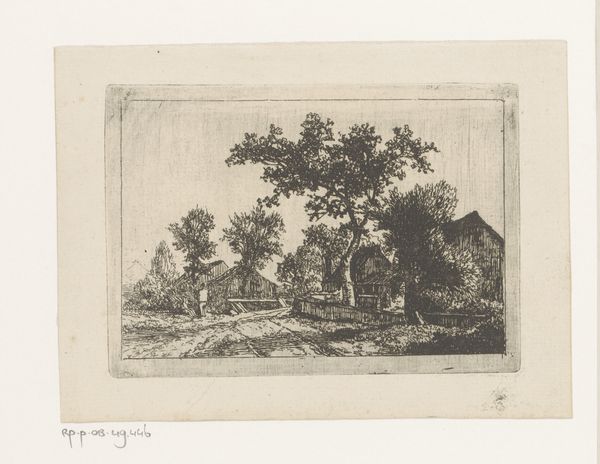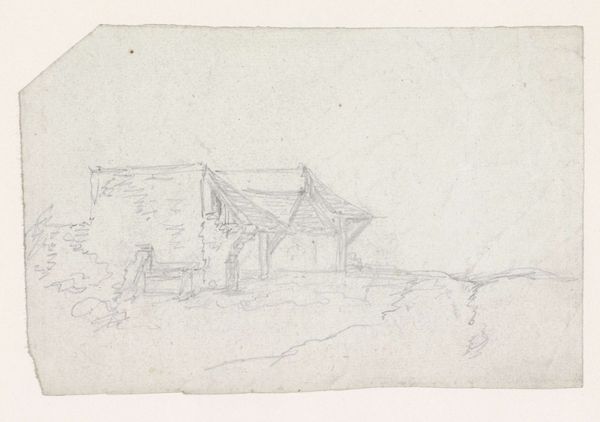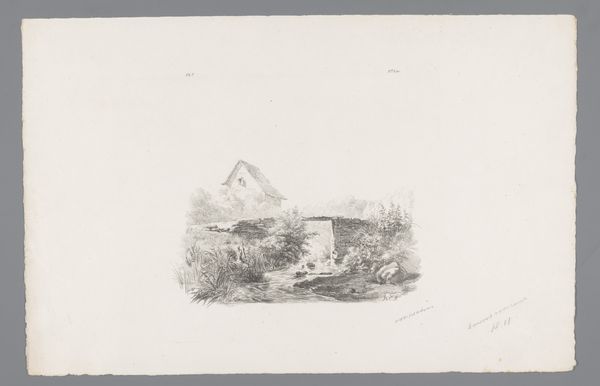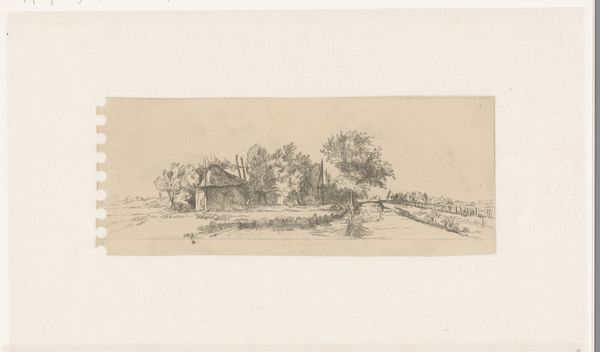
drawing, print, etching
#
drawing
# print
#
etching
#
landscape
#
etching
Dimensions: height 70 mm, width 107 mm
Copyright: Rijks Museum: Open Domain
Lodewijk Juliaan Fuchs created this small etching, ‘Dilapidated House with Tree,’ sometime in the 19th century. The technique, etching, is itself suggestive. A metal plate is covered with a waxy ground, into which the artist scratches a design. The plate is then submerged in acid, which bites into the exposed metal, creating recessed lines. Ink is applied, then wiped away, remaining only in the etched lines. Finally, paper is pressed onto the plate, transferring the image. It’s a somewhat laborious process, yet capable of infinite repetition. The artist creates a matrix, from which identical images can be printed over and over. In this case, we see a humble rural scene, rendered in precise detail. Note the thatched roof, collapsing. Fuchs’s subject matter and mode of production speak of labor, class, and the era’s shifting relationship to land. By understanding the amount of work involved in the production process, and by considering its relation to social context, we can gain a fuller appreciation of the artwork's significance.
Comments
No comments
Be the first to comment and join the conversation on the ultimate creative platform.
